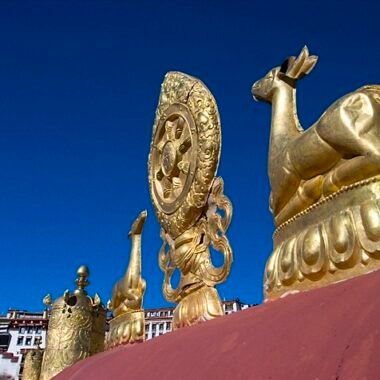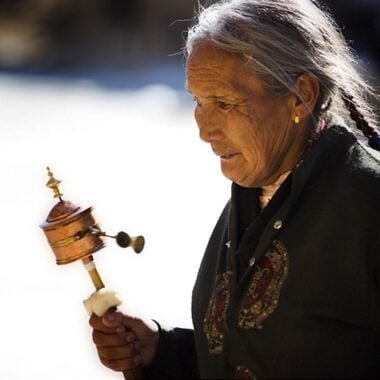Tibet Cultural Etiquette
Tibet, known as the “Roof of the World,” is a land rich in cultural heritage and religious traditions. Visitors to this unique region must be mindful of the local customs and practices to show respect and ensure a harmonious interaction with the local people. Here are some key aspects of Tibetan cultural etiquette to keep in mind when traveling to this majestic land.
Greetings and Interaction
- Respectful Greetings: When greeting locals, a traditional Tibetan greeting involves clasping your hands together in front of your chest and slightly bowing your head. Saying “Tashi Delek,” which means “good fortune,” is a polite way to greet someone.
- Physical Contact: Avoid touching people on the head, as it is considered sacred. Similarly, pointing with a single finger is seen as impolite; use an open hand or all fingers instead.
Visiting Monasteries and Religious Sites
- Dress Modestly: When visiting monasteries or religious sites, it is important to dress conservatively. Shoulders and knees should be covered, and hats should be removed upon entering the premises.
- Remove Shoes: In some monasteries, you may be required to remove your shoes before entering. Follow the lead of locals or your guide.
- Photography Etiquette: Always ask for permission before taking photographs, especially inside monasteries or of monks. Some sites may have restrictions on photography, and it is crucial to respect these rules.
- Respecting Religious Artifacts: Do not touch or sit on religious objects, statues, or altars. Refrain from pointing your feet towards these sacred items as well.
Interaction with Monks and Locals
- Gifting: When giving or receiving items, use both hands or the right hand supported by the left. This gesture is a sign of respect.
- Conversation Topics: Avoid discussing sensitive political issues. Topics related to the Dalai Lama, Tibetan independence, or Chinese policies can be controversial and should be approached with caution or avoided altogether.
- Monetary Donations: When visiting religious sites, it is customary to make a small donation. Place money in donation boxes rather than handing it directly to monks or nuns.
Dining Etiquette
- Sharing Meals: If invited to a local’s home, it is polite to accept food and drink offerings. Refusing hospitality can be seen as disrespectful.
- Using Utensils: When dining, use the communal serving utensils provided and avoid using your own utensils to take food from shared dishes.
- Tea Drinking: Tibetan butter tea, or “Po cha,” is a staple drink. When offered tea, it is polite to accept it. The host will keep refilling your cup, so to indicate you’ve had enough, leave a small amount of tea in your cup.
General Conduct
- Be Patient: Tibetan culture is deeply rooted in Buddhism, which emphasizes patience and compassion. Maintain a calm and respectful demeanor in all interactions.
- Environmental Respect: Tibetans hold nature in high regard. Avoid littering and be mindful of the environment.
By understanding and adhering to these cultural etiquettes, visitors can enjoy a more meaningful and respectful experience in Tibet. Showing respect for local customs not only enriches your travel experience but also fosters positive interactions with the hospitable Tibetan people.
Popular Tours in Tibet
Contact Us
Please feel free to contact us for any question you have when plan your tour to Tibet. We’ll be happy to help!












